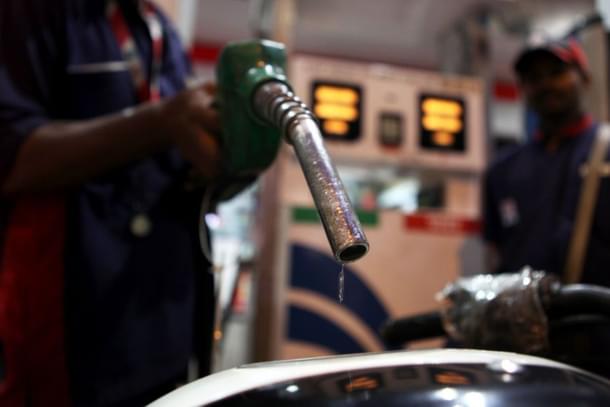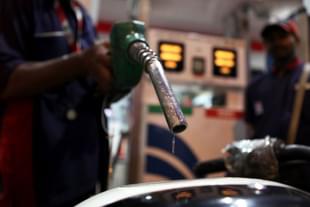Infrastructure
India Achieves 10 Per Cent Ethanol Blending Target Ahead Of Deadline
Swarajya Staff
Jun 06, 2022, 07:14 PM | Updated 07:14 PM IST
Save & read from anywhere!
Bookmark stories for easy access on any device or the Swarajya app.


Reaching a milestone, PSU Oil marketing companies (OMCs) have attained an average 10 per cent ethanol blending in petrol across the country.
Prime Minister Narendra Modi announced the achievement of the 10 per cent target at an event to mark the World Environment Day in the national capital on Sunday (05 June).
The OMCs have achieved the target six months before the targeted timeline of November 2022, i.e. by the end of ensuing ethanol supply year (ESY) 2021-22 (1 December 2021 to 31 November 2022).
Ethanol Blending
Pure ethanol - 100 per cent ethanol or E100 - could theoretically be used to power vehicles, but generally isn’t, due to technical challenges and lack of financial viability.
Ethanol thus is mixed with petrol to form different blends. The commonly used blends are E5 (5 per cent ethanol, 95 per cent petrol), E10 (10 per cent ethanol, 90 per cent petrol), or E85 (85 per cent ethanol by volume and known as flex fuel).
Ethanol blending leads to decreased emissions, significantly benefits the economy and has proved to be a boon for farmers.
The Target
The Government of India, with the aim to enhance India’s energy security, reduce import dependency on fuel, save foreign exchange, address environmental issues and give a boost to the domestic agriculture sector, has been promoting the Ethanol Blended Petrol (EBP) Programme.
The ‘National Policy on Biofuels’ notified by the Government in 2018 envisaged an indicative target of 20 per cent ethanol blending under the EBP by 2030. However, due to encouraging initiatives on the supply side of ethanol, the target of 20 per cent ethanol blending in petrol was advanced from 2030 to 2025-26.
This was announced by Prime Minister Narendra Modi on 5 June 2021 on World Environment Day while releasing the report of the expert committee on “Roadmap for ethanol blending in India 2020-25”. The roadmap lays out a detailed pathway for achieving 20 per cent ethanol blending. This roadmap also mentioned an intermediate milestone of 10 per cent blending to be achieved by November, 2022.
The ambitious target is a key element of the economy-wide energy transformation. India achieved 9.99 per cent ethanol blending on May 09, 2022, according to the Ministry of Petroleum and Natural Gas (MoPNG).
Benefits
From just 1.5 per cent blending in 2013-14 and 5 per cent in 2019-20 to 10 per cent in 2021-22, the achievement in the course of the last eight years has been possible due to the coordinated efforts of the OMCs.
This has not only augmented India’s energy security but also translated into a forex impact of over Rs 41,500 crores. It has also led to 27 lakh MT reduction in GHG emissions and expeditious payment of over Rs. 40,600 crores to farmers.
With all the initiatives taken by the Government, the EBP Programme is on track to achieve the target of 20 per cent blending across the country by ESY 2025-26. This will translate into an annual forex impact of over Rs 35,000 crore, 21.6 lakh MT reduction in GHG emissions annually and payment of over Rs 65,000 crore to farmers.




